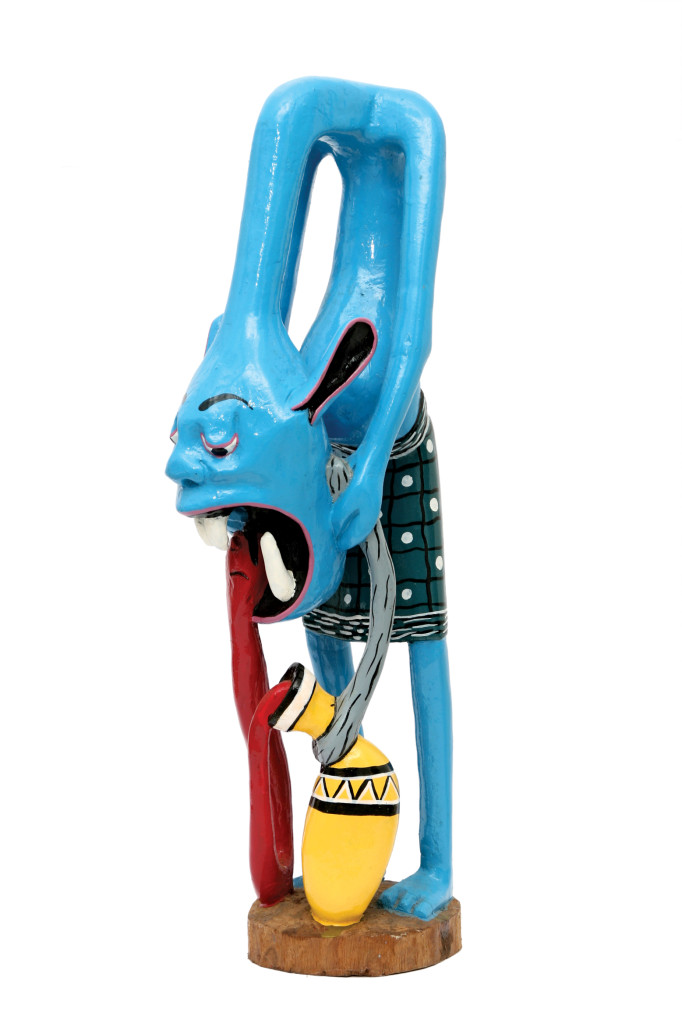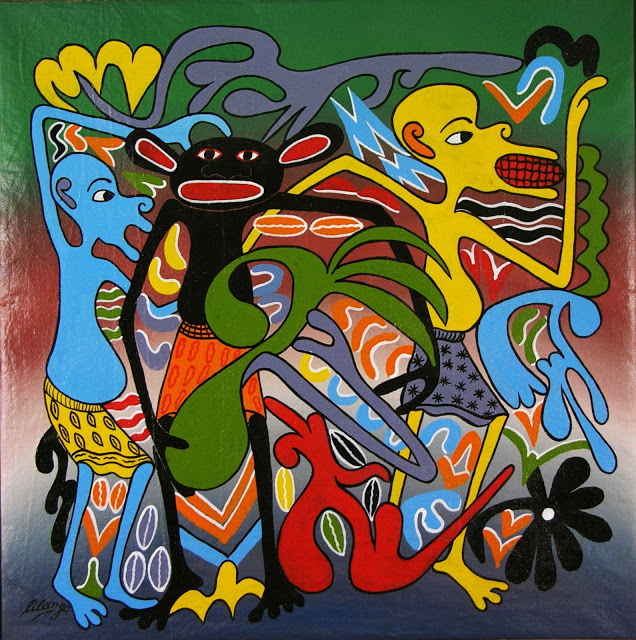
George Lilanga: a representative of the vividness of Swahili paintings.
About:
Georges Lilanga (1934-2005) was a Tanzanian artist.
George Lilanga was born in 1934 in Kikwetu village southern Tanzania and passed away in June 2005. Like most Makonde youngsters, he learned to carve on soft cassava root; later he graduated to carving the hard black wood made famous by Makonde artists. He later came to Dar es Salaam where he joined a group of carvers. But his big break came when he was hired as a watchman at Nyumba ya Sanaa now called Nyerere Cultural Centre. Cleverly, he took the opportunity to show his carvings to Sister Jean, one of the management staff, who recognized his talent and immediately changed his duties. He added drawing to his repertoire, producing work used on batiks, on murals on canvas and as paintings on goatskin. Today Lilanga’s creations can still be seen at Nyumba ya Saana on the painted metal entrance gate and on the cement-cast decorations around the patio.
A major step in George Lilanga’s career occurred in 1978. A group exhibition organized in Washington D.C. featured 280 pieces of art 100 of which were Lilanga’s. From then on George Lilanga enjoyed international renown and a continuous and impressive number of exhibitions in Europe, Japan and the United States. After having won praise from western audiences, the Tanzanian artist has become a representative of the vividness of Swahili paintings.
This exibition had a big influence on the work of the new pop generation, specialy Keith Haring. (from the book, tribute to George Lilanga). All of this has never taken him from his country but has allowed him to contribute to the maintaining of his tribe and at the same time bring outside attention to his culture and country. Lilanga presents the culture and mythology of his people through canvases swarming with figures, vibrant colours and a rhythmic movement representing Mapico dance, typical of his people.
The work: Contemporary African art
Lilanga is considered by many Contemporary African Art specialists as one of the major representatives in the field, to the point where his paintings and sculptures are often featured on the cover of many reference books dealing with the subject. Looking at the art you get the feeling of entering a magic and fun world; history and everyday life are told with strong irony, verified also by the titles of his works: ‘the discussion’ ‘There’s a world but I’ve forgotten it’, ‘Wait a minute, my neck is itchy’, ‘When children play they jump here and there’. Another aspect which strikes the observer is the artist’s joy of living: he says “I paint when I’m happy and I tell the daily life of my people.”
 The Style: The world of spirits
The Style: The world of spirits
The imaginary world of Lilanga is inhabited by cartoon-like personages, not very different from people. They may only have two fingers on their hands, three toes on their feet, extended lips reminiscent of the traditional Nona Makonde women and elongated ears, but otherwise the rest of the body is human-like. A common name used for Lilanga’s works has been the equivalent of devil Mashetani but the negative connotation of this term is misleading. Lilanga’s art is rather the world of spirits. ”Mizimu” meaning all the presences filling one’s mind, deceased or living. The artist tells all of us in an immediately understandable graphic form that life is enjoyable if we look lightly at the demons that inhabit our mental and spiritual worlds. Lilanga has travelled internationally to many destinations to attend his own exhibitions.
“Art is natural to us Makonde people; it is an important work and a source of income. I have personally achieved many things in life through this work”




